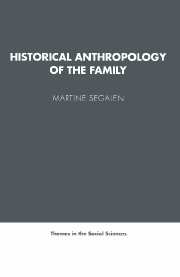2 - KINSHIP AND KINSHIP GROUPS
Published online by Cambridge University Press: 14 January 2010
Summary
We are naturally inclined to think that our family, which is so much a part of our lives, is something universal, and it comes as a shock to find quite different patterns in other parts of the world. It is here that the concept of kinship can help us see things in a detached way. Every human group is based on the same biological fact, and the way in which it moves from that stage to the social one provides a means of understanding its real nature.
That basic biological fact, or starting point, is a man, a woman and their children. Between the children and the woman there is the tie of giving birth and descent, and the children in turn are linked to their mother and hence to each other. The brother-sister and mother child link is biological, whereas the association of man and woman is social. Every society has to give a name to the ties that bring a whole range of relationships, feelings and obligations into these two- or three-part groupings. Having said that, it is immediately apparent that the ties between all these individuals are not of the same kind, for those between mother and children are ties of blood, whereas those between man and woman are ties of marriage.
The word ‘kin’ is still to be found in dictionaries, but in everyday language it is losing ground since it is not much used and is easily mixed up with ‘family’. The vagueness of the former is consequently transferred to the latter.
- Type
- Chapter
- Information
- Historical Anthropology of the Family , pp. 43 - 72Publisher: Cambridge University PressPrint publication year: 1986

